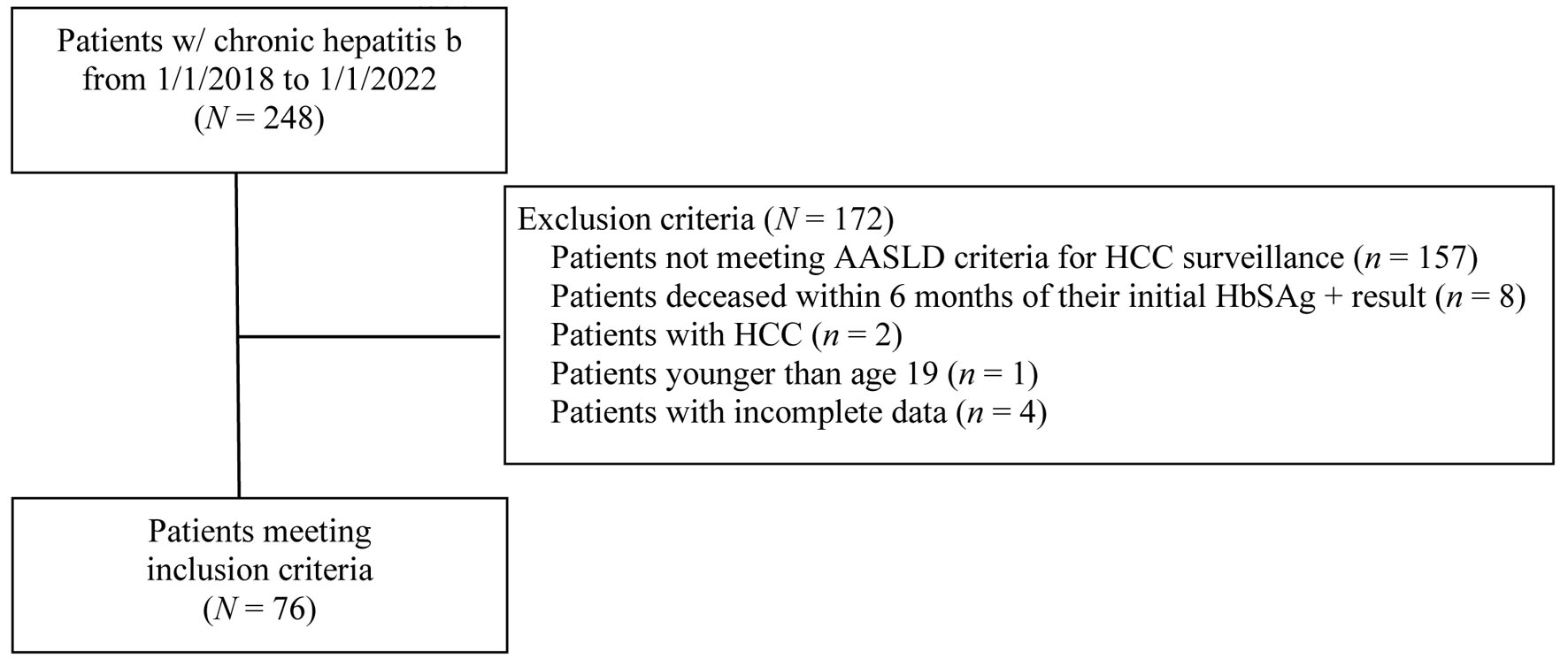
Figure 1. Patient flowchart for inclusion and exclusion criteria. AASLD: American Association for the Study of Liver Diseases; HCC: hepatocellular carcinoma; HbSAg: hepatitis B surface antigen.
| Gastroenterology Research, ISSN 1918-2805 print, 1918-2813 online, Open Access |
| Article copyright, the authors; Journal compilation copyright, Gastroenterol Res and Elmer Press Inc |
| Journal website https://www.gastrores.org |
Original Article
Volume 16, Number 4, August 2023, pages 203-208
Sex and Race Disparities in Hepatocellular Carcinoma Surveillance in Patients With Chronic Hepatitis B During COVID-19: A Single-Center Retrospective Review
Figure

Tables
| Variable | ID clinic (n = 6) | GI clinic (n = 46) | Not in clinic (n = 22) | Both ID and GI clinics (n = 2) |
|---|---|---|---|---|
| Other race includes patients who identify as native Hawaiian or other Pacific Islander or declined to provide information regarding race. GI: gastroenterology; ID: infectious disease; SD: standard deviation. | ||||
| Gender, no. (%) | ||||
| Male | 5 (83.3) | 35 (76.1) | 14 (63.6) | 2 (100) |
| Female | 1 (16.7) | 11 (23.9) | 8 (36.4) | 0 (0) |
| Race, no. (%) | ||||
| Asian | 6 (100) | 29 (63.0) | 12 (54.5) | 1 (50) |
| Black | 0 (0) | 8 (17.4) | 9 (40.9) | 0 (0) |
| White | 0 (0) | 4 (8.7) | 1 (4.6) | 1 (50) |
| Other | 0 (0) | 5 (10.9) | 0 (0) | 0 (0) |
| Ethnicity, no. (%) | ||||
| Not Hispanic | 6 (100) | 44 (95.7) | 22 (100) | 2 (100) |
| Hispanic | 0 (0) | 2 (4.3) | 0 (0) | 0 (0) |
| Non-English speaking, no. (%) | 5 (83.3) | 25 (54.3) | 13 (59.1) | 1 (50) |
| Insurance, no. (%) | ||||
| Public | 1 (16.7) | 15 (32.6) | 6 (27.3) | 1 (50) |
| Private | 5 (83.3) | 29 (63.0) | 14 (63.6) | 1 (50) |
| No insurance | 0 (0) | 2 (4.4) | 2 (9.1) | 0 (0) |
| Age (mean ± SD), years | 49 ± 12 | 51 ± 12 | 53 ± 11 | 59 ± 9 |
| Interval | 1 (July 2018 - January 2019) | 2 (January 2019 - July 2019) | 3 (July 2019 - January 2020) | 4 (January 2020 - July 2020) | 5 (July 2020 - January 2021) | 6 (January 2021 - July 2021) | 7 (July 2021 - January 2022) |
|---|---|---|---|---|---|---|---|
| The COVID-19 surge occurred during study intervals 4-6. aP = 0.026. HCC: hepatocellular carcinoma. | |||||||
| HCC surveillance indicated, no. | |||||||
| Men | 19 | 25 | 31 | 37 | 41 | 49 | 56 |
| Women | 4 | 8 | 9 | 12 | 14 | 15 | 20 |
| HCC surveillance indicated and performed, no. | |||||||
| Men | 10 | 7 | 9 | 7 | 8 | 10 | 15 |
| Women | 1 | 3 | 5 | 6 | 5 | 3 | 7 |
| HCC surveillance completion percentage (%) | |||||||
| Men | 52.6 | 28 | 29 | 18.9a | 19.5 | 20.4 | 26.8 |
| Women | 25 | 37.5 | 55.6 | 50.0a | 35.7 | 20.0 | 35.0 |
| Variable | Male | Female | P-value |
|---|---|---|---|
| COVID-19: coronavirus disease 2019; HCC: hepatocellular carcinoma; NS: not significant. | |||
| COVID-19 surge HCC screening when indicated (%) | 38 | 47 | 0.60 |
| Non-surge screening when indicated (%) | 62 | 53 | 0.62 |
| Interval | 1 (July 2018 - January 2019) | 2 (January 2019 - July 2019) | 3 (July 2019 - January 2020) | 4 (January 2020 - July 2020) | 5 (July 2020 - January 2021) | 6 (January 2021 - July 2021) | 7 (July 2021 - January 2022) |
|---|---|---|---|---|---|---|---|
| Other race includes patients who identify as native Hawaiian or other Pacific Islander or declined to provide information regarding race. The COVID-19 surge occurred during study intervals 4-6. HCC: hepatocellular carcinoma. | |||||||
| HCC surveillance indicated, no. | |||||||
| Asian | 13 | 17 | 22 | 30 | 35 | 40 | 47 |
| Black | 5 | 7 | 9 | 11 | 11 | 13 | 16 |
| White | 3 | 5 | 6 | 6 | 6 | 6 | 8 |
| Other | 2 | 3 | 3 | 3 | 2 | 5 | 5 |
| HCC surveillance indicated and performed, no. | |||||||
| Asian | 5 | 5 | 9 | 7 | 10 | 4 | 12 |
| Black | 3 | 3 | 2 | 5 | 2 | 5 | 4 |
| White | 2 | 2 | 3 | 1 | 1 | 2 | 4 |
| Other | 1 | 1 | 0 | 1 | 0 | 2 | 2 |
| HCC surveillance completion percentage (%) | |||||||
| Asian | 38.5 | 29.4 | 40.9 | 23.3 | 28.6 | 10 | 25.5 |
| Black | 60 | 42.9 | 22.2 | 45.5 | 18.2 | 38.5 | 25 |
| White | 66.7 | 40 | 50 | 16.7 | 16.7 | 33.3 | 50 |
| Other | 50 | 33.3 | 0 | 33.3 | 0 | 40 | 40 |